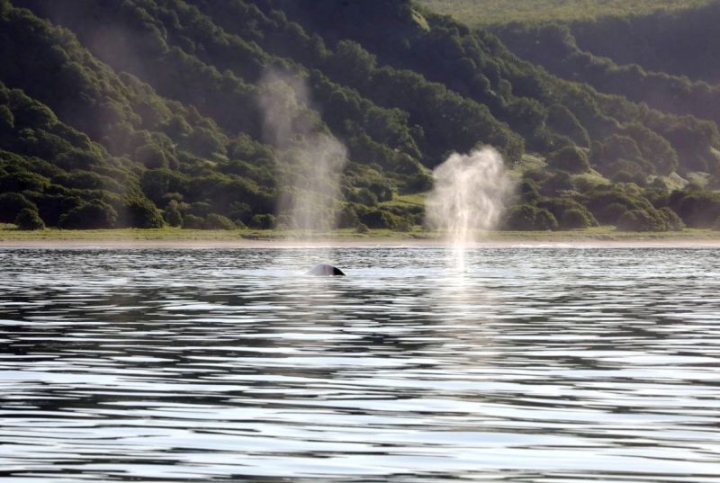In a nature reserve in Kamchatka, female gray whales show off their cubs

World Whale and Dolphin Day is celebrated today, July 23. The Kronotsky Nature Reserve reported on the success of the feeding group of the rarest Okhotsk population of gray whales, Kamchatka.Today reports.
Observations of gray whales from a boat this year began in the first days of May. In spring, the animals return to the waters of Kamchatka after wintering and breeding in the southern latitudes, off the coast of Mexico.
Kronotsky Bay is one of the important feeding grounds for gray whales, where they restore their fat reserves. So far, many of them are very thin. First of all, this applies to mothers, because a long journey, the birth of a cub and feeding it with milk require huge amounts of energy. Therefore, whales feed almost around the clock.
This season, more than 140 Red Book sea giants visited Kronotsky Bay. Many of them will continue on their way to other feeding areas, some will remain in the coastal protected water area throughout the summer and autumn.
52 sea giants have already participated in this year’s photo shoot, adding to the Kamchatka photo catalog of gray whales. It now contains a portfolio of 263 individuals.
At the same time, 96 animals were recorded in the Kronotsky Bay during the entire field season of 2024, which lasted more than 6 months. But this does not mean that there have been changes in the state of the Red Book marine mammal population.
Scientists were pleased with the stable and fairly high birth rate of gray whales. 16 mothers with cubs have already been registered. Six of them came with the whales in 2023.
“The fact that some females bring offspring regularly is a great sign! Everything is fine with them,” said Evgenia Volkova, a marine biologist and researcher at the reserve.
Photo by Evgenia Volkova/Kronotsky Nature Reserve.